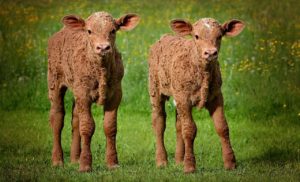Copper For Young Cattle – Too Much Of A Good Thing?
5 April 2017 In December Jamie N. Henningson of Kansas State Veterinary Diagnostic Laboratory published a useful note in ‘Bovine Veterinarian’ on cases of apparent overfeeding of minerals. His general observations are equally relevant to UK livestock farmers.
In December Jamie N. Henningson of Kansas State Veterinary Diagnostic Laboratory published a useful note in ‘Bovine Veterinarian’ on cases of apparent overfeeding of minerals. His general observations are equally relevant to UK livestock farmers.
During 2012-2016 the laboratory saw several cases of acute hepatic necrosis. A common factor was recent vaccination and injection with supplemental mineral. The calves ranged from 30 days to 6 months and were getting multiple sources of minerals which included oral free choice mineral, injectable, high protein top dressed supplements, liquid supplements, and probiotic with minerals. In some cases the calves were given 2.5 times the labelled dose for injectable on top of having other sources of minerals. These were in addition to the minerals in feed.
Sources
In UK we generally have injections, combinations of trace-mineralised compound feeds and concentrates, boluses, licks, blocks, buckets and mineralised drenches as well as free access and in-feed minerals to take into consideration! Heather Stevenson included a warning about excess iodine in her “Sheep & Beef News” January note!
In addition, weather conditions and fertilisation can change the levels of minerals in feed and soil; therefore, checking the mineral status of feed and soil may need to be routinely performed.
Severe cases result in death, but one should consider if toxic doses are given but not at a level to cause death, where decreased performance or a change in animal behaviour may result. It is important to follow label directions and to consult an approved cattle and sheep nutritionist about mineral supplementation.
John Main
Sign up to the FAS newsletter
Receive updates on news, events and publications from Scotland’s Farm Advisory Service
